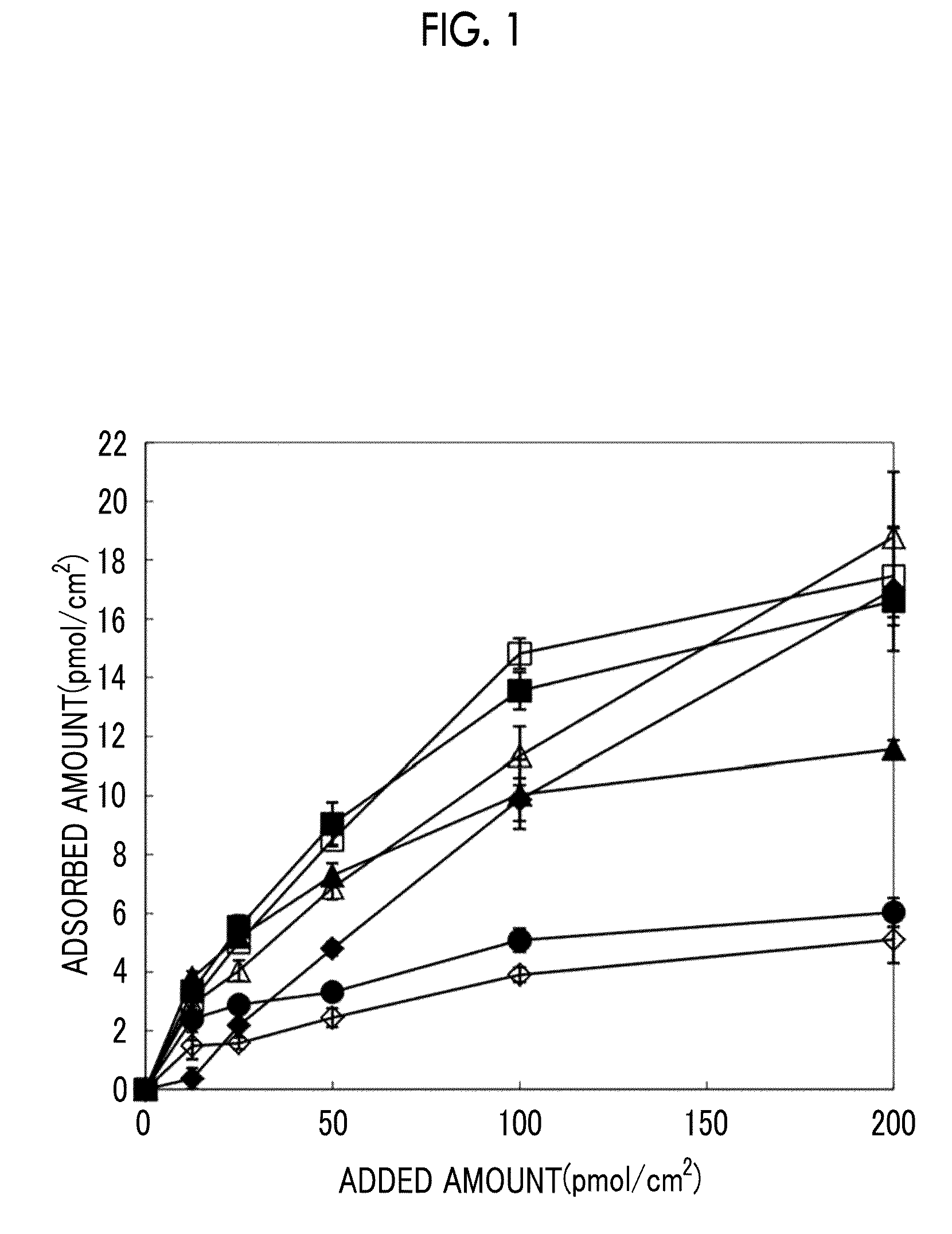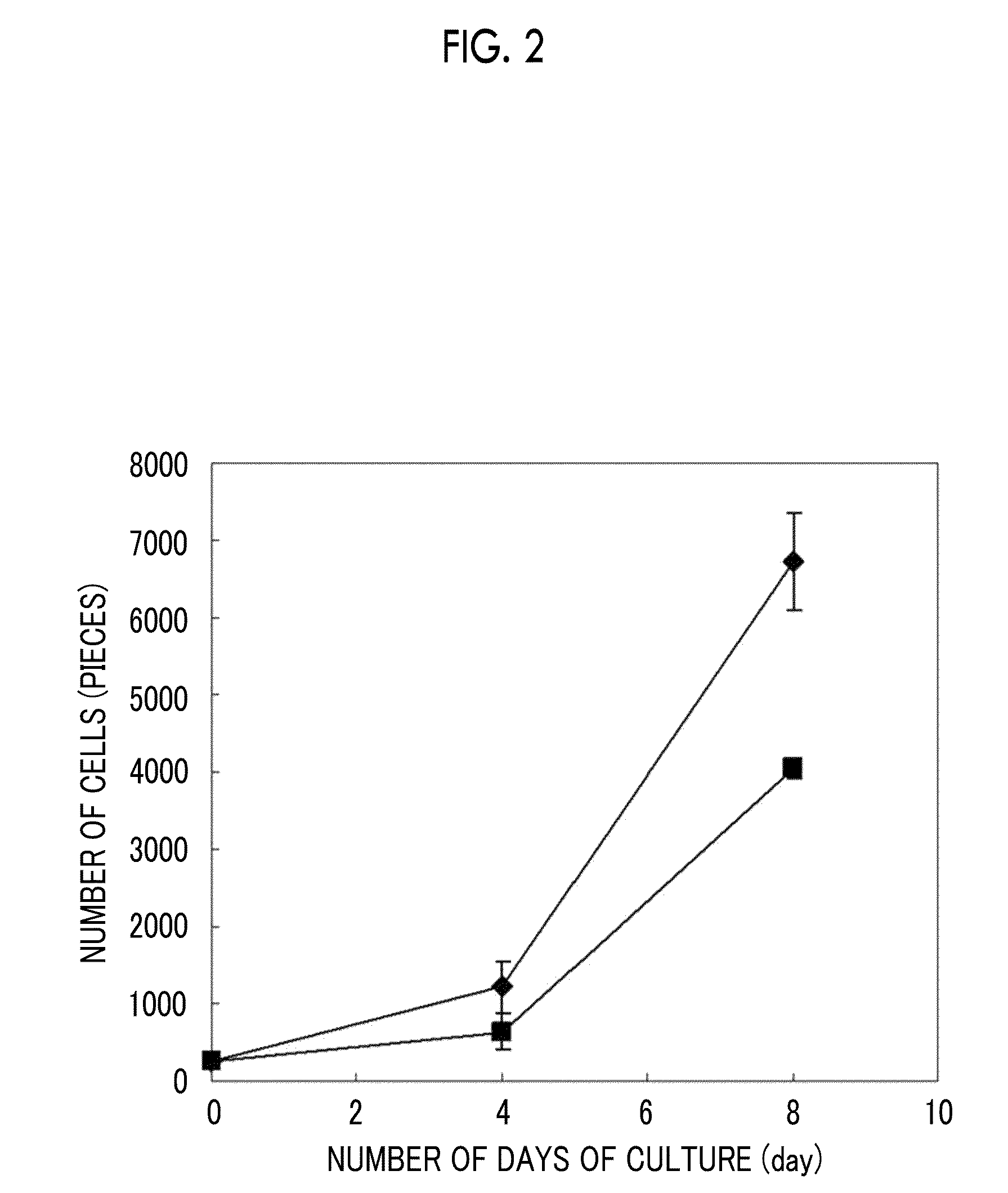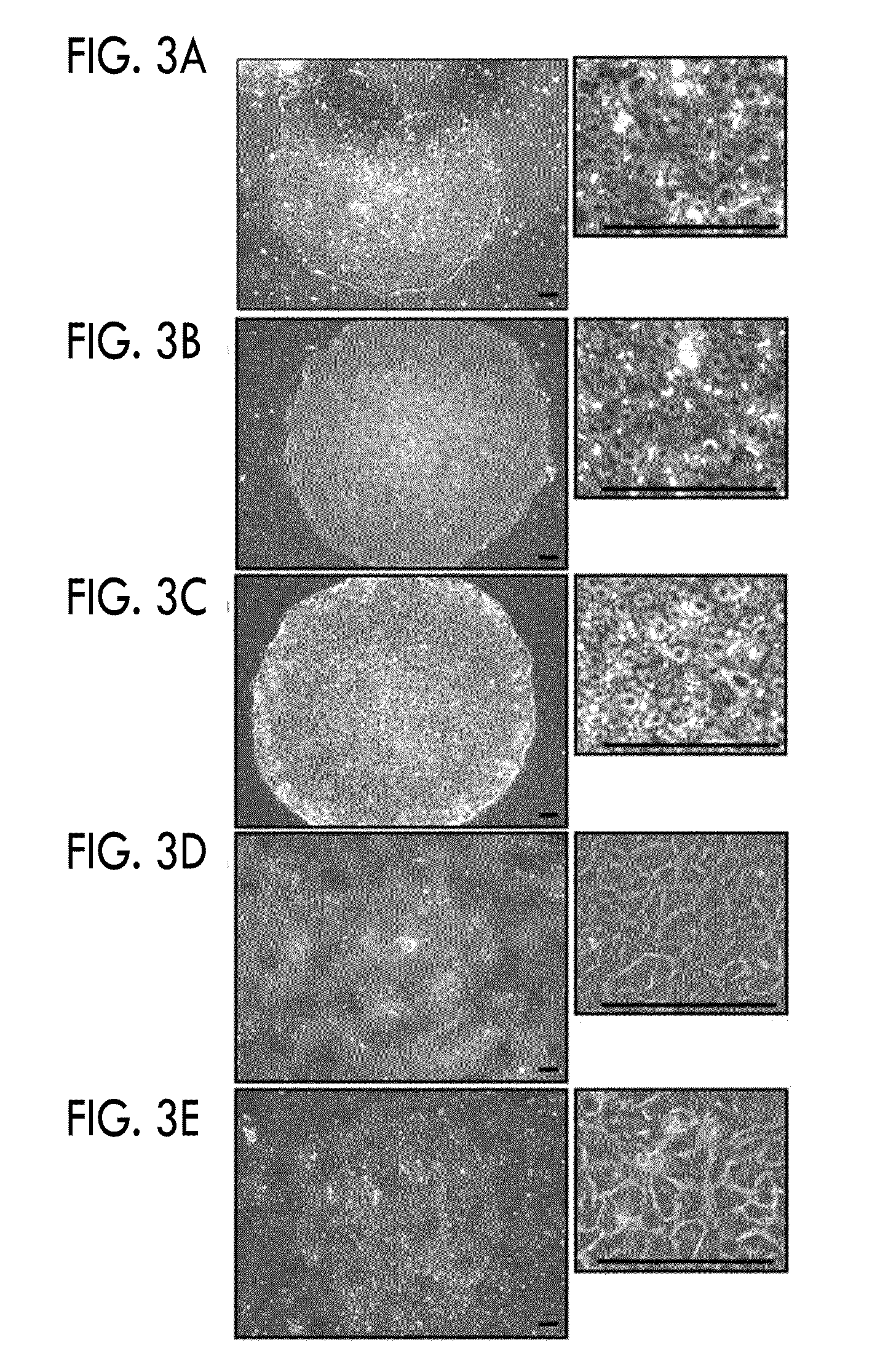Polypeptide composition and culture method for pluripotent stem cell using same
a technology of polypeptide and composition, which is applied in the field of polypeptide composition and culture method of pluripotent stem cells using the same, can solve the problems of insufficient replacement of feeder cells, inability to rule out the possibility of intermixing of antigenic substances, and inability to say that such a recombinant peptide has a sufficient etc., to achieve excellent cell growth ability and induce pluripotent stem cell culturing property
- Summary
- Abstract
- Description
- Claims
- Application Information
AI Technical Summary
Benefits of technology
Problems solved by technology
Method used
Image
Examples
reference example 1
Preparation of Polypeptide
[0231]By a common method using PCR, gene sequences encoding each of the polypeptides RCP-1 to RCP-17 having the amino acid sequences shown in Tables 2 and 3 were amplified. Herein, RCP-11 corresponds to the sequence of natural human vitronectin. In Tables 2 and 3, the column of “NOTE” shows the position in the amino acid sequence (SEQ ID NO: 1) of natural human vitronectin corresponding to the amino acid sequence of each of the polypeptides. Here, in some cases, the amino acid sequence of each of the polypeptides include an amino acid sequence which is formed by the addition, deletion, or substitution occurring in the amino acid sequence of the natural human vitronectin within a range corresponding described in the tables. The amino acid sequences of RCP-1 to RCP-10 and RCP-17 are the same as each other, except that methionine is on the N-terminal in each of the amino acid sequences represented by SEQ ID NO: 4 to SEQ ID NO: 13 and SEQ ID NO: 38.
[0232]For RC...
reference example 2
Evaluation of Adsorbability with Respect to Culture Dish
[0246]Each of the polypeptides obtained as above was diluted with a predetermined buffer such that they could be added to wells at a predetermined final concentration of 0 μmol / cm2 to 200 μmol / cm2. Thereafter, each of the polypeptides was added in an amount of 64 μL to a plasma-treated 96-well plate made of polystyrene (Tissue Culture-Treated, Falcon). Each of the polypeptides was allowed to adsorbed onto the plate by being incubated for 2 hours at 37° C., and then the wells were washed twice with PBS, thereby obtaining surfaces coated with each of the polypeptides of RCP-1 to RCP-16.
[0247]Among the surfaces coated with each of the polypeptides obtained as above, the surfaces coated with RCP-1 and RCP-11 to RCP-16 were applied with 64 μL of a borate buffer and 64 μL of 1 N NaOH, followed by incubation for 24 hours at 80° C. and 100% humidity. After the resultant was air-cooled, 75 μL of a borate buffer was added to each well, a...
reference example 3
Cell Adhesiveness Evaluation 1
[0249]The cell adhesiveness of human iPS cells (“Tic”: Cell No. JCRB 1331: from National Institute of Biomedical Innovation. [567-0085, 7-6-8 Asagi Saito Ibaraki-City Osaka]) with respect to the aforementioned polypeptides was evaluated in the following manner.
[0250]As feeder cells for retaining the human iPS cells, EMBRYOMAX (registered trademark) (early mouse embryonic fibroblasts: resistant to hygromycin, treated with mitomycin C, derived from C57 / BL6, third passage) (Millipore Corporation) was used. By using DMEM (Invitrogen) and a 10% (v / v) fetal bovine serum medium, the feeder cells were cultured for 24 hours and attached to a T25 flask (trade name, Corning Incorporated). As a medium for the human iPS cells, the one obtained by adding FGF-2 (Sigma-Aldrich Co, LLC.) to a medium composed as shown in Table 5 at a final concentration of 10 ng / ml was used.
TABLE 5CompositionMakerAmountKO—DMEM / F12Invitrogen400mlNon-Essential Amino4mlAcid SolutionL-Glutam...
PUM
| Property | Measurement | Unit |
|---|---|---|
| time | aaaaa | aaaaa |
| diameter | aaaaa | aaaaa |
| pH | aaaaa | aaaaa |
Abstract
Description
Claims
Application Information
 Login to View More
Login to View More - R&D
- Intellectual Property
- Life Sciences
- Materials
- Tech Scout
- Unparalleled Data Quality
- Higher Quality Content
- 60% Fewer Hallucinations
Browse by: Latest US Patents, China's latest patents, Technical Efficacy Thesaurus, Application Domain, Technology Topic, Popular Technical Reports.
© 2025 PatSnap. All rights reserved.Legal|Privacy policy|Modern Slavery Act Transparency Statement|Sitemap|About US| Contact US: help@patsnap.com



